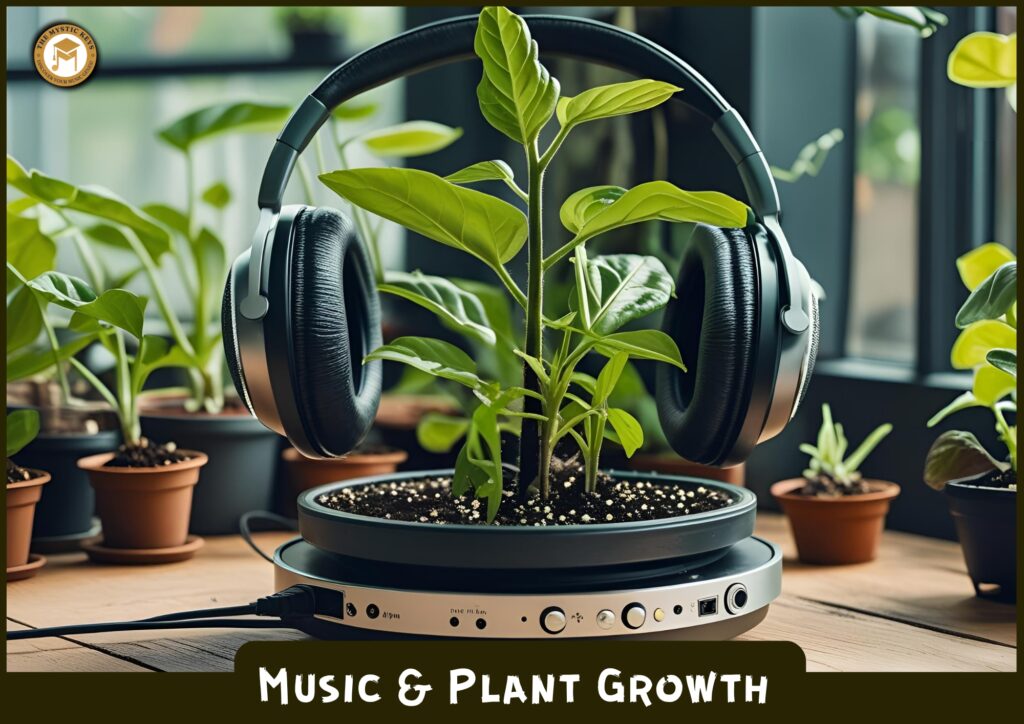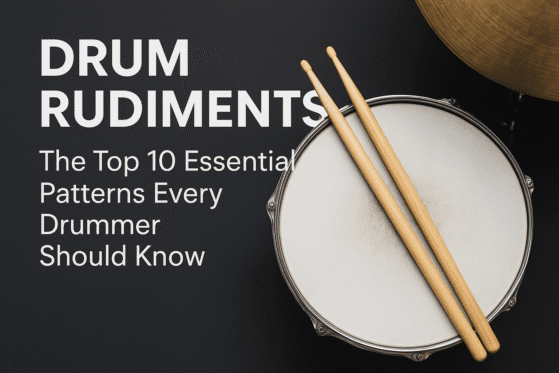Music & Plant Growth | Can Plants Really Grow Faster with Music?
Plants have quietly nurtured life on Earth for millions of years. They feed us, oxygenate our air, and beautify our surroundings. Yet, as remarkable as plants are, there remains an enduring mystery that has intrigued scientists, gardeners, and nature lovers alike: the fascinating relationship between music and plant growth. Can music — that intangible blend of melody, rhythm, and vibration — actually help plants grow faster?
This question, which borders between science and art, has fascinated humanity for decades. In this blog, we will embark on a detailed exploration of this phenomenon. From early experiments and scientific studies to theories on how sound influences plant biology, and even the cultural allure of musical plants, we will unravel what is known, what remains speculative, and what this means for anyone with a green thumb.

The Genesis of the Idea | How Did Music and Plant Growth Become Linked?
To fully appreciate this topic, it’s important to trace back how this curious connection between music and plant growth came to be. The notion that plants respond to music emerged prominently in the late 20th century, when pioneering researchers like Dorothy Retallack conducted groundbreaking experiments in the 1970s. Retallack’s work suggested that plants might not only respond to sound but do so differently depending on the type of music played.
Retallack’s observations were striking: plants exposed to classical music, known for its harmonious and balanced sound waves, tended to grow more robustly. Conversely, plants subjected to rock music — characterized by its intense, erratic, and often loud sounds — showed signs of stress, such as wilting leaves or slower growth. Meanwhile, plants in silence grew at a normal, steady pace.
This early research sparked both excitement and skepticism, leading to a surge of experiments worldwide. But beyond mere curiosity, the question remains: Why should music — vibrations transmitted through air — influence an organism without a nervous system or ears?
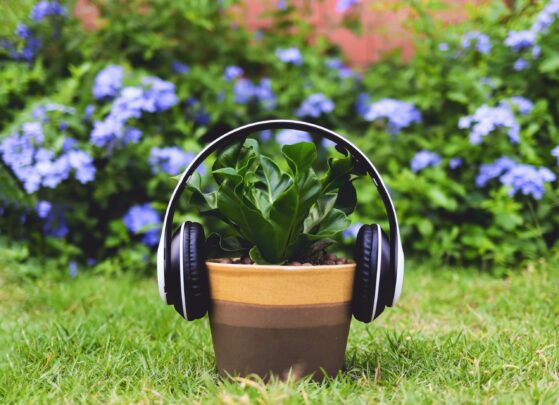
Understanding the Science | How Might Music Impact Plant Growth?
Though plants lack auditory organs, they are sensitive to their environment in remarkable ways. They react to light, touch, gravity, chemicals, and even sound vibrations. But how could music, essentially a complex pattern of sound waves, influence plant biology? Here are some of the leading scientific theories and explanations that attempt to unravel this mystery.
1. Mechanical Vibration as a Stimulus
One of the most plausible mechanisms is the idea that sound waves cause mechanical vibrations that stimulate plant tissues. Just as gentle touching or wind can influence plant growth by triggering mechanoreceptors (specialized cells sensitive to touch and pressure), sound waves may act similarly. Vibrations from music could enhance cellular processes such as enzyme activity, nutrient transport, and cell division, all vital for growth.
2. Effects on Gene Expression
Advances in molecular biology have revealed that external stimuli can influence gene expression in plants. Some experimental evidence indicates that certain sound frequencies might activate genes responsible for growth regulation, stress response, and metabolism. This implies that music could act at a genetic level, subtly steering plant development.
3. Stress Reduction and Environmental Stabilization
Sound, especially music with soothing harmonics, might reduce environmental stress on plants. For instance, rhythmic sound waves could stabilize microclimatic conditions such as temperature and humidity around the plant, or minimize harmful vibrations caused by external noise. Reduced stress generally leads to healthier, faster-growing plants.
4. Frequency and Resonance Effects
Every physical system has a natural frequency at which it resonates. Some researchers propose that specific sound frequencies resonate with different parts of the plant — roots, stems, leaves — optimizing nutrient absorption and growth. Low-frequency sounds (bass notes) might stimulate root elongation, while higher-frequency sounds could promote leaf or flower development.
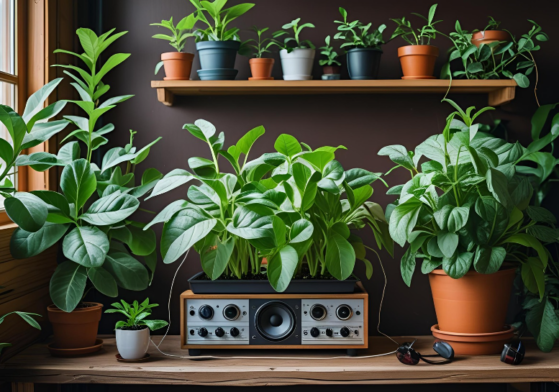
Scientific Experiments and Findings | What Does the Research Say?
Over the years, a variety of experiments have been conducted to test the effects of music on plant growth, with mixed but intriguing results.
Dorothy Retallack’s Early Experiments
Dorothy Retallack’s seminal work remains one of the most cited studies on music and plants. By exposing plants to different musical genres, she noted that classical music encouraged plants to lean towards the speakers, grow taller, and appear healthier. Rock music, by contrast, seemed to inhibit growth and cause adverse reactions. Though pioneering, Retallack’s methodology had limitations, and her results spurred both imitation and criticism.
Indian Classical Music and Crop Growth
In more recent times, research from India has gained attention. Scientists have experimented with Indian classical ragas, playing these melodic frameworks to crops such as wheat and rice. Some studies suggest improvements in germination rates, chlorophyll concentration, and overall yield. The belief here ties into the cultural reverence for sound vibrations in Indian tradition, though rigorous scientific validation remains ongoing.
Seed Germination and Specific Frequencies
A 2014 study published in Ultrasonics Sonochemistry examined how sound waves at certain frequencies affected seed germination and seedling growth. Results indicated that sound in the range of 1000 to 3000 Hz could enhance germination and early growth phases. These findings hint at the possibility that sound waves influence fundamental biological processes, though the exact mechanisms are still being investigated.
Contradictions and the Role of Environmental Factors
Despite promising results, many experiments fail to find statistically significant effects or cannot replicate findings consistently. Critics argue that other environmental factors — such as light, water, soil quality, and temperature — overwhelmingly influence plant growth, overshadowing any effect of music. This raises the possibility that music’s role is supplementary at best, and more research with controlled conditions is needed.

The Cultural and Psychological Dimensions | Why We’re Drawn to Musical Plants
Beyond the scientific realm, the idea that music can influence plants taps into deep cultural and psychological themes.
Human Empathy for Plants: People often project emotions onto plants, imagining them as living beings that can feel and respond. Playing music becomes a way to nurture this connection.
Historical Beliefs in Sound Healing: Across cultures, sound has been revered as a healing force — from Tibetan singing bowls to Aboriginal chants — and it’s natural that these beliefs extend to plant life.
Gardening as a Mindful Ritual: Playing music while gardening enhances the experience, making it meditative and joyful, even if the growth impact is subtle.

How to Experiment with Music for Your Plants
If you’re eager to test this at home, here are some thoughtful recommendations:
Opt for Soothing Music: Classical, instrumental, or nature sounds are less likely to cause stress.
Moderate Volume Levels: Keep the sound gentle; loud noises may be disruptive.
Be Consistent: Daily exposure, ideally for 30 minutes to 2 hours, allows plants to adapt.
Keep a Growth Journal: Track progress to observe any changes over time.
Combine with Good Care: Remember that water, light, and soil nutrition are still paramount.
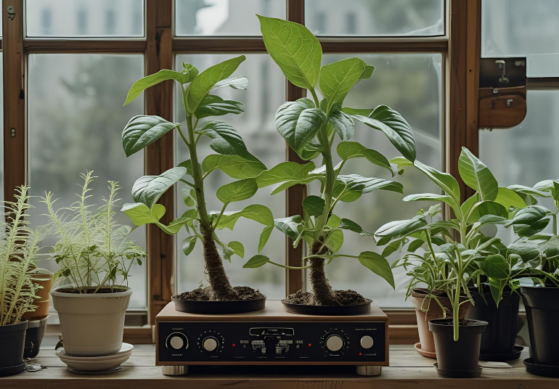
Final Thoughts | Does Music Really Make Plants Grow Faster?
To sum up, while the science remains inconclusive, there is growing evidence that sound, including music, can influence plant growth at multiple levels — from cellular activity and gene expression to environmental stress reduction. The effects are likely dependent on many variables: the type of music, frequency, duration, plant species, and surrounding conditions.
Whether or not your plants grow noticeably faster with music, playing tunes for your greenery is a beautiful way to deepen your bond with nature. It brings rhythm not only to plants but also to our lives, reminding us that growth — in nature and in ourselves — often flourishes in harmony. If you’re inspired to explore the transformative power of music more deeply, consider joining The Mystic Keys, where we nurture your musical journey and help you bring harmony into every aspect of life.
Related Blogs
How to Play Music with More Emotion and Expression
Music has the extraordinary ability to stir deep emotions and create unforgettable experiences. However, playing music that truly touches the soul requires more than technical skill; it demands genuine emotional music expression.
How to Improve Your Rhythm and Timing in Music | Master Every Beat with Confidence
Rhythm and timing are not just elements of music—they are its foundation. Regardless of the genre you choose to explore, keeping a steady beat remains essential.
The Science Behind Music and Sleep | Can It Help You Rest Better?
In today’s fast-paced world, sleep music therapy has emerged as a powerful solution for those struggling to achieve quality rest. With constant distractions, stress, and the pressure of daily life, many people find it increasingly difficult to fall asleep or stay asleep.


